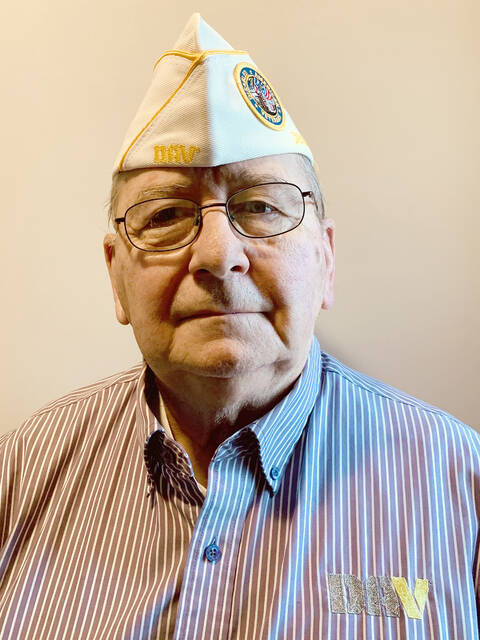In January of 2025, the Department of Veterans Affairs (VA) reported it had 260,00 backlog claims for disability compensation. A backlog claim is a claim that is pending after 125 days of being filed.
The former director of the VA’s PACT Act Enterprise Program Office, Steve Miska reported that the VA had completed two (2) million PACT Act-related disability compensation claims prior to January 11, 2025 and nearly seventy-five (75%) were approved.
Miska explained that the VA completed 37% of those claims in less than 125 days, “meaning they never went into the backlog to begin with.”
“We had to hire. We had to ramp up both claims’ processors and healthcare professionals to be able to handle the influx of veteran demand that we anticipated from the outreach campaign,” Miska concluded.
On May 9, 2025, VA Secretary Doug Collins informed the House Appropriation Committee that the number of backlog claims had now dropped to 201,000, a twenty-one (21%) percent decrease.
“We didn’t add any employees, and we didn’t add any more money to do that. We just got it done, because this is the problem we’re seeing,” stated VA Secretary Collins, during hearings with the House subcommittees on military construction and related agencies.
On May 15, 2025, VA Press Secretary Pete Kasperowicz revealed how the reduction in backlog cases would continue. Starting on May 18, 2025, mandatory overtime for VA rating claim processors will start again.
Mandatory overtime is meant to reduce the backlog of unprocessed claims.
Mandatory overtime was ended by the Veterans Benefit Administration (VBA) in July of 2025. It had been initiated in July of 2017, seven (7) years ago to keep up with an increased workload of claims.
Effective immediately, each Veterans Service Representative (VSRs) and Rating Veterans Service Representatives (RVSRs) will have to work ten (10) hours of mandatory overtime by the end of May. Each Rating Quality Review Specialist (RQRS) will have to work eight (8) hours of mandatory overtime by the end of May.
Starting in June of 2025, each VSR and RVSR will be required to work twenty-five (25) hours of mandatory overtime before the end of June. Each RQRS will have to work twenty (20) hours of mandatory overtime in June.
Following the termination of mandatory overtime in July of 2024, the VBA initiated a volunteer policy of allowing employees to work up to twenty (20) hours per month of overtime to keep productivity and were given “maximum telework flexibility.”
Utilizing the “maximum telework flexibility,” these VBA employees were required to come into the office to work at least two days each pay period.
LaVawn Green, a member of the quality review team at the VBA Philadelphia Regional Office, said “VA facilities have limited space and insufficient equipment to support return-to-office efforts, and called the mandate a “self-imposed obstacle making it harder to serve veterans.”
Green said, “she’s concerned the requirement of mandatory overtime — in addition to a return-to-office mandate and plans to cut more than 80,000 jobs from VA — will cause burnout among her coworkers.”
My Opinion: It is wonderful that the backlog of disability compensation claims has been reduced from 260,000 claims to 201,000 claims during a recent five (5) month span. However, each backlogged claim represents a veteran seeking the benefits that they have earned based upon the disabilities they received while serving in the military.
My opinion on the topic is impacted by a military term I learned early while serving in the Army. That term is “the fog of war.” In this case, the “fog of war” refers to the “unpredictable and unstable nature of the situation which obscures a commander’s ability to gather accurate information.”
Specifically, how many VBA positions processing claims are going to be impacted by the decision to cut the VA’s full-time employment (FTE) by fifteen (15%) percent by August 1, 2025?
VA Secretary Collins has pledged to terminate 80,000 VA employees without negatively impacting the direct medical services received by the veterans from the Veterans Health Administration (VHA).
We must understand that the VBA deals strictly with veterans’ benefits (like processing disability compensation claims) while the VHA deals strictly with veterans’ medical services (like treatments for PTSD at a VA hospital.)
If the VHA, which is already short-staffed in healthcare areas, is not going to be significantly impacted by the 80,000 firings, then most of the reductions in FTE must come from the VBA that processes the benefits that the veterans’ have earned.
It is also my opinion that mandatory overtime is not a sustainable operating practice for an organization.
Veterans should only be satisfied when the disability compensation claims backlog should be down from 201,000 backlogged claims to zero. The VBA has made significant progress in the last two (2) years, but there is more progress that must be made to reduce the backlogged claims to zero.
BioSketch: John Plahovinsak is a retired 32-year Army veteran who served from 1967 to 1999. He is the Disabled American Veterans (DAV) Department of Ohio’s Hospital Chairman and Adjutant of Chapter #63 (Clermont County). He can be reached at: [email protected].
Subscribe to The Clermont Sun today!
https://www.clermontsun.com/subscribe

